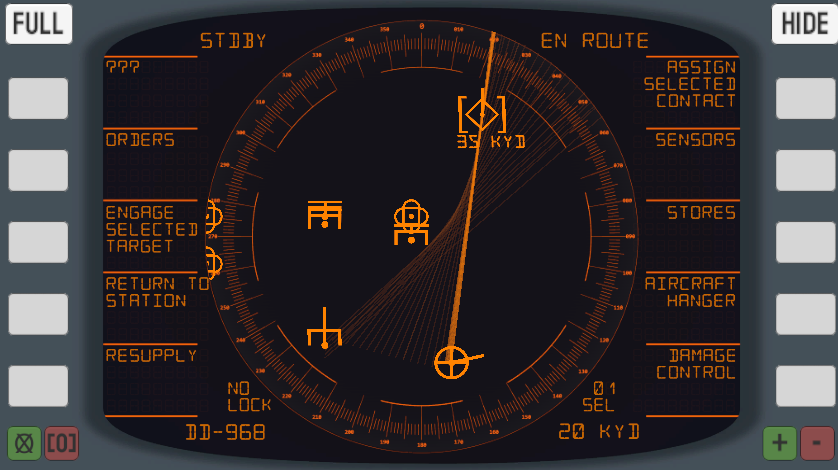Apologies for the late update, here's some replies and in them I describe some of the work that's been going on since last update with regard to SAM behavior and simulation.
Quote:
Originally Posted by Herman

You have described some very complex fragmentation behaviour.
IIRC, one of the big concerns regarding point defence weaponry such as Phalanx intercepting Soviet high-speed missiles, like Kitchen and Sunburn, is the fact that fragmentation and ballistic effects of destroyed missiles. Will those effects be simulated within the game?
|
To an extent, they already are, with missiles capable of taking multiple damage modes, some of which merely throw off their guidance.
Quote:
Originally Posted by drmezza

Ad 1) Maybe 688i H/K overdid it a bit with their sense of realism (I never bothered with manually plotting target solutions, but the options was there), but: the way the passive sonar waterfall in Cold Waters is solely used for target classification purposes, seems a bit like babying the player. What I'm trying to say is: lovers of this genre are total suckers for realism. We understand certain sacrifices will have to be made in the interest of broader market-appeal, but please, don't dumb it down too much.
Ad 2) This is not true for all lovers of this genre, but it certainly is for me: I'm having a hard time enjoying (naval) simulation games when the graphical realism is not up to speed with the times. I'm not even talking about ray tracing etc., but using a modern state-of-the-art engine (like Unreal) and having us pay the licensing fees for doing so, are a conditio sine qua non. In fact: I don't even care that much about trains, but take a look at TSW on the one hand, and Train Simulator 2019 on the other, and you'll get my point. It's supposed to be a simulation, and these days a mid-range GPU suffices to make a game look awesome. Make sure to let us pay for the privilege, like the devs of TSW do (every DLC comes at a price, but that's allright). We understand you're operating in a nich market, so appropriate prices are part of the deal.
That is all for now. Keep up the good work!
Best,
DrMezza.
|
I can see two big probable reasons why CW had less TMA work:
1. decreasing the active management/workload for the player so they can actual captain the sub. There's a good reason in real life you have separate crew doing the TMA work while the captain just rolls with the reports that are given.
2. It's a significant extra time and resources to develop something that's not necessarily even a good feature.
Similarly, I plan for TMA work to be unnecessary since there's enough to do with managing weapons, helos and ships.
But that's not to say it's absent. One thing I worked on awhile back is active intercept/ESM code with passive detection legs. Some are saved into long-term history while all are saved into short term history, and they're visible when you only have one contact selected. If you have more or less than one non-friendly contact selected, you only see the sonar pings or ESM intercepts that have happened in the last few seconds.

That being said, I'm always a fan of leaving extra options available so I do plan for contact assignments to be able to be made, at least, among a few other manual overrides.
Another fun quirk is any weapon can be fired at any contact. It's really only a question of if the target has a radar reflection and if the weapon's guidance system is capable of detecting and handling whatever you threw it at.
You can even throw an S-300F with a range of 75 km (5V55R missile) at a target 300 km away - it's just the guidance director won't be too happy about it and it'll be a very sad missile.
But the fun thing about systems like this is the "range" of a weapon isn't a magic barrier. Aside, perhaps, from cruise missiles which will run out of fuel and lose speed relatively quickly, the minimum and maximum ranges of most weapons is kind of a blurry line and depends a good deal on how fast and/or maneuverable the target is.
And let's say making a realistic physics-based guidance system on a SAM with quadratic drag, realistic trajectories, limited attitude control authority at higher altitudes, etc. is certainly a challenge.
But it's definitely worth it when it allows players to interact with situations more realistically and creatively. Helicopters will need to keep a further distance than faster supersonic jets, targets with more predictable trajectories are easier to hit, and evasive tactics that take advantage of missile's limited maneuverability should work.